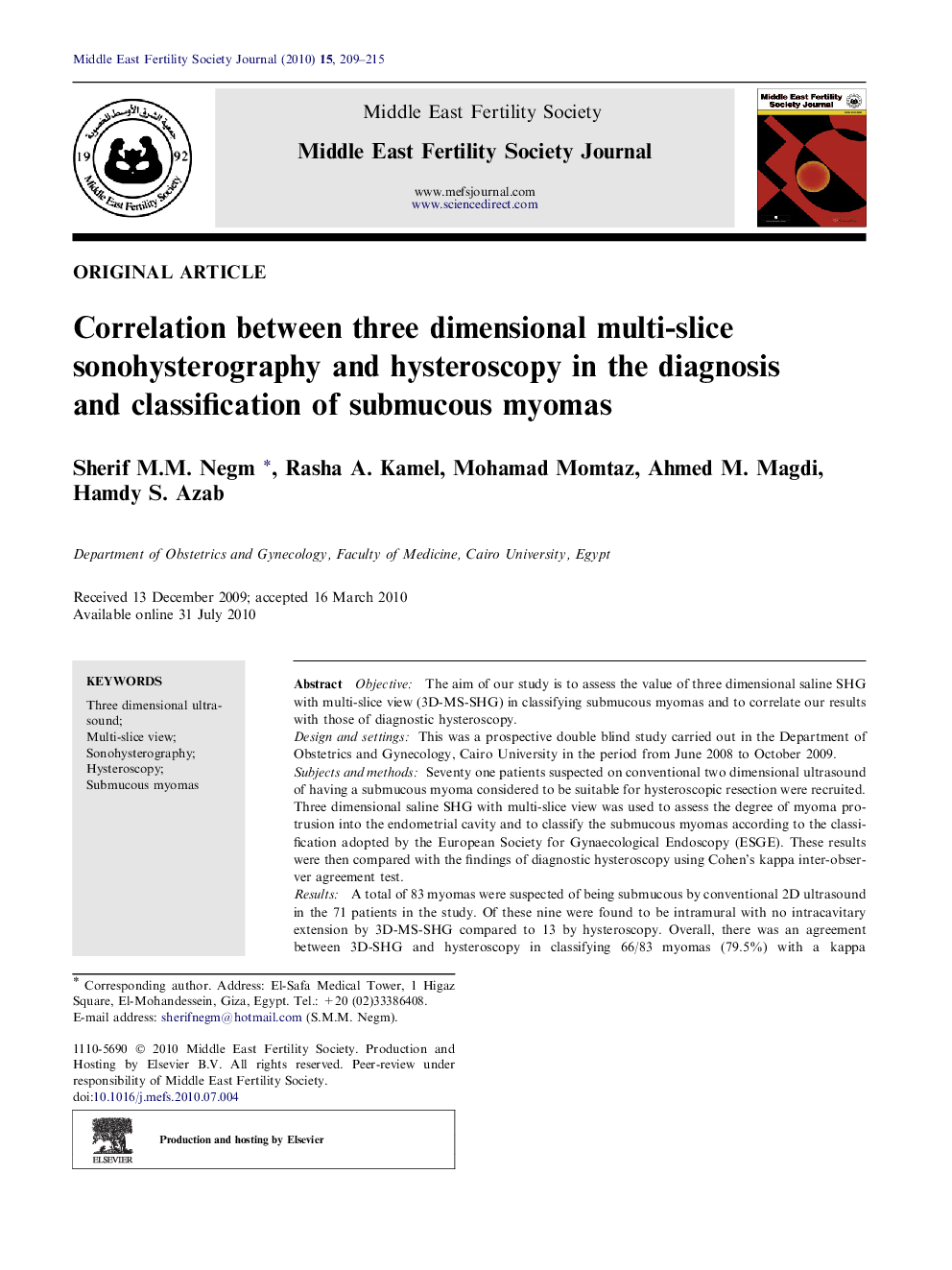| Article ID | Journal | Published Year | Pages | File Type |
|---|---|---|---|---|
| 3966423 | Middle East Fertility Society Journal | 2010 | 7 Pages |
ObjectiveThe aim of our study is to assess the value of three dimensional saline SHG with multi-slice view (3D-MS-SHG) in classifying submucous myomas and to correlate our results with those of diagnostic hysteroscopy.Design and settingsThis was a prospective double blind study carried out in the Department of Obstetrics and Gynecology, Cairo University in the period from June 2008 to October 2009.Subjects and methodsSeventy one patients suspected on conventional two dimensional ultrasound of having a submucous myoma considered to be suitable for hysteroscopic resection were recruited. Three dimensional saline SHG with multi-slice view was used to assess the degree of myoma protrusion into the endometrial cavity and to classify the submucous myomas according to the classification adopted by the European Society for Gynaecological Endoscopy (ESGE). These results were then compared with the findings of diagnostic hysteroscopy using Cohen's kappa inter-observer agreement test.ResultsA total of 83 myomas were suspected of being submucous by conventional 2D ultrasound in the 71 patients in the study. Of these nine were found to be intramural with no intracavitary extension by 3D-MS-SHG compared to 13 by hysteroscopy. Overall, there was an agreement between 3D-SHG and hysteroscopy in classifying 66/83 myomas (79.5%) with a kappa inter-observer value of 71.5 (95% confidence interval=0.58–0.84). The agreement between the two diagnostic modalities became less as the myometrial portion of the myomas increased. From the 16 myomas diagnosed as Type 0 (fibroid polyps) by hysteroscopy, 14 were suspected as such by 3D-MS-SHG (87.5%), 20/24 (83.3%) of Type I myomas, 23/30 (76.6%) for Type II and 9/13 (69.2%) for intramural myomas with no intracavitary extension. The mean diameter of Type 0 myomas as measured by both 3D-MS-SHG and hysteroscopy was similar (3D-MS-SHG=3.6, hysteroscopy=3.8, p=0.22). However, with increasing myometrial involvement, the discordance between the two modalities increased with a statistically significant difference in the measurement of Type I myomas (3D-MS-SHG=4.5, hysteroscopy=3.6, p=0.0006) as well as Type II myomas (3D-MS-SHG=4.7, hysteroscopy=3.7, p=0.0005).ConclusionThe results of the present study showgood overall agreement between 3D-MC SHG and diagnostic hysteroscopy in classifying submucous myomas with a Cohen's kappa value of 71.5. The highest level of agreement was achieved in classifying Type 0 myomas, becoming more discordant with increasing myometrial involvement.
